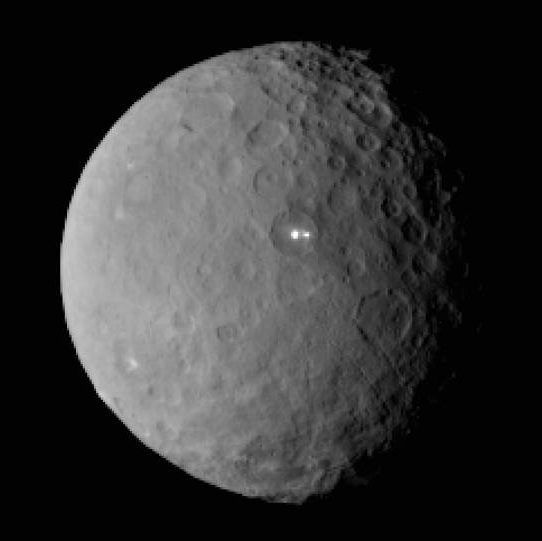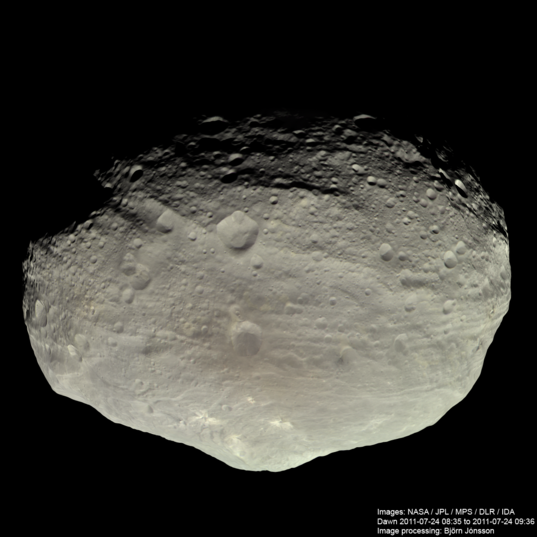
Ceres
Ceres is named after the Roman goddess of agriculture.
Ceres is the largest and most massive body in the asteroid belt; its mass is about 1.4% that of the Earth's moon and its diameter is 466km.
1 Cererian day = 9.1 Earth hours; 1 Cererian year = 4.6 Earth years.
It was promoted from asteroid to dwarf planet status by the IAU at the same time that Pluto was demoted to the same position.
NASA's Dawn spacecraft began it's orbit around Ceres in March, 2015, after completing its study of Vesta (another body in the asteroid belt). Astronomers believe that water ice buried under Ceres' crust because its density is less than that of the Earth's crust, and because the dust-covered surface bears spectral evidence of water-bearing minerals. In 2014, the Herschel telescope detected plumes of water vapour coming up from the surface of Ceres. Astronomers hope that the Dawn mission will shed light on the formation and early conditions of our solar system.

Vesta
Vesta is named after the Roman goddess of hearth and home
It is the second most massive object in the solar system; its mass is about 0.4% that of the Earth's moon and its diameter is 530 kilometres.
1 Vestan day = 5.3 Earth hours; 1 Vestan year= 3.6 Earth years
NASA's Dawn spacecraft studied Vesta for about a year before moving on to Ceres. Vesta was completely melted in the past, forming a layered body with an iron core. It endured two major impacts in its southern hemisphere, creating large basins. Dawn has also discovered hydrated materials (minerals containing water molecules) on Vesta's surface. This is significant as astronomers currently think that Earth's water came from asteroids such as Vesta (instead of comets as they had previously thought).
